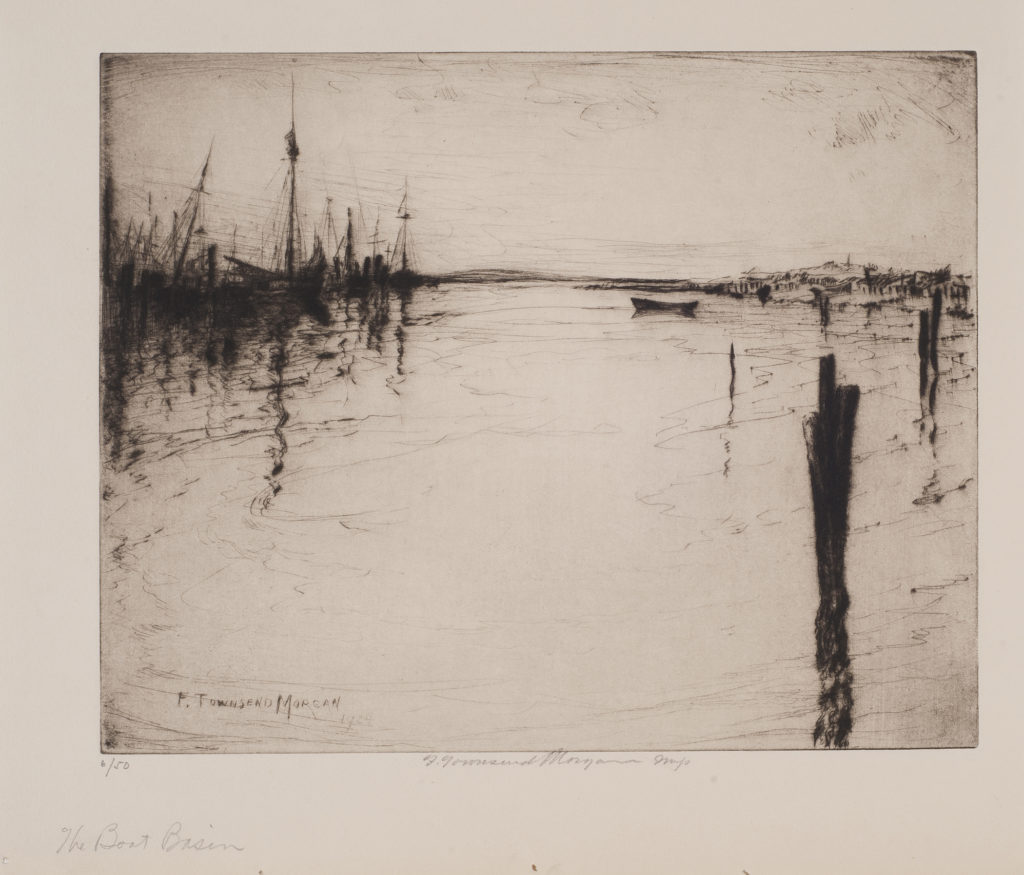Printmaker F. Townsend Morgan is by no means a household name. Even many art historians of the era in which he worked have never heard of him, and he never worked or lived in Georgia. So why is the Georgia Museum of Art at the University of Georgia organizing the first exhibition of Morgan’s work since his death in 1965?
Guest curator and independent scholar Stephen Goldfarb studies prints from the years between World War I and II, which is when Morgan mostly worked. Morgan’s prints of sailboats, in particular, caught Goldfarb’s eye. They reminded him of James McNeill Whistler’s images of similar subjects, rendered with minimal detail that nonetheless captures sky, sea, boat and land. Indeed, Morgan studied with artist Joseph Pennell in Philadelphia, who knew Whistler and served as his first biographer. Although Morgan’s work was not well known, its quality was high.
A retired librarian who has served as guest curator of several previous shows at the museum, Goldfarb started researching Morgan’s life. He found descendants scattered around the U.S., including one granddaughter who had saved boxes and boxes of Morgan’s papers. Morgan had started off making art as a hobby while working in the family steel business, and when the Great Depression hit and caused that business to go bankrupt, he turned to his pastime to try to make a living, making hundreds of figurative prints.
Avocation to Vocation: Prints by F. Townsend Morgan is on view at the museum through Sept. 10. It includes about 30 of Morgan’s prints, a watercolor he made while in the U.S. Virgin Islands, several drawings, studies for prints and some ephemera. If anything, the fact that Morgan is almost unknown is the reason to present the exhibition, to correct the art historical record in a small way, said Goldfarb.
Morgan was born in 1883 and grew up in Brooklyn, New York. He studied art at the Pratt Institute in Brooklyn and the Art Students League in New York City, learning from artists Arthur Dow, George Bridgman and John F. Carlson. In Philadelphia, he was associated with the Sketch Club, the Print Club and the Pennsylvania Academy of the Fine Arts. When he and his family fell on hard times, he found work with various New Deal art programs, traveling to the Virgin Islands and Florida.
Morgan first found work with the Public Works Art Project in Philadelphia in 1933. Specifically established to get the unemployed through the winter of that year, it was the first of several federal government programs that employed out-of-work artists. One of his assignments was to make drawings of slum conditions in Philadelphia for first lady Eleanor Roosevelt to use in a talk. Two etchings resulted from these drawings, both of which are in the exhibition.
Morgan won prizes for his work, and his prints belong to the collections of the Library of Congress, the New York Public Library and the U.S. Treasury Department, as well as the Georgia Museum of Art. He seems to have managed to support himself and his family through his commissions and various federally funded gigs. Goldfarb said he hopes that this exhibition will draw attention to Morgan’s “considerable oeuvre” of prints and that they can become a small part of American art history.
Programs related to the exhibition of Morgan’s work include public tours Aug. 23 at 2 p.m. and Sept. 10 at 3 p.m.
